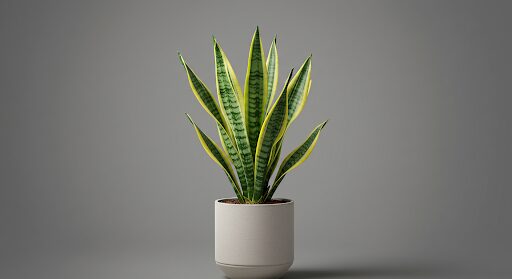If you’re looking for a plant that’s both stylish and easy to care for, the Mother in Law’s Tongue (also known as Snake Plant) is an excellent choice. With its striking vertical leaves and low-maintenance care requirements, it has become a popular option for both beginners and experienced gardeners alike. This resilient plant thrives in indoor environments and even purifies the air, making it a perfect addition to any home. In this guide, we’ll explore everything you need to know about Mother in Law’s Tongue plant care, from lighting and watering to pruning and propagation.
Table of Contents
Introduction: Why Choose a Mother in Law’s Tongue?
The Mother in Law’s Tongue (Sansevieria trifasciata) is a hardy and unique plant known for its upright, sword-like leaves that can range in color from dark green to variegated patterns of yellow and light green. This plant is an excellent choice for indoor gardening as it thrives with minimal attention. In fact, one of the key selling points of the Mother in Law’s Tongue is its ability to adapt to a variety of growing conditions, making it one of the most low-maintenance plants available.
In addition to its striking appearance, this plant is a natural air purifier, removing toxins such as formaldehyde, benzene, and xylene from the air. It can thrive in both low-light and bright conditions, making it an ideal addition to any room, from your living room to your office. Let’s dive deeper into how to care for your Mother in Law’s Tongue.

Lighting and Temperature
Providing the Right Environment for Your Mother in Law’s Tongue
The Mother in Law’s Tongue is a highly adaptable plant that can thrive in various light conditions. However, to ensure your plant grows well and remains healthy, it’s important to understand its lighting and temperature needs.
Lighting Requirements:
This plant prefers bright, indirect light but can tolerate low light conditions, making it ideal for rooms with less natural light. If possible, place your Mother in Law’s Tongue near a window where it can receive filtered sunlight. Avoid placing it in direct sunlight, as this can cause the leaves to scorch and turn brown.
If you’re growing the plant in a dimly lit area, don’t worry — the Mother in Law’s Tongue can still survive. However, its growth may slow down, and the variegated patterns of the leaves may not be as vibrant. If you’re looking for the best results, try to provide at least a few hours of indirect light each day.
Temperature Requirements:
Mother in Law’s Tongue prefers temperatures between 60°F and 85°F (15°C and 29°C). It can tolerate some temperature fluctuations, but it should be kept away from cold drafts or sudden temperature changes, as this can harm the plant. This plant also does best in stable, indoor conditions, so keep it away from air conditioners, heaters, or windows that are prone to freezing in the winter.

Watering and Humidity
Watering and Humidity Needs of Mother in Law’s Tongue
When it comes to watering, the Mother in Law’s Tongue is very forgiving. Overwatering is one of the most common mistakes new plant owners make, but this plant is designed to store water in its thick, fleshy leaves, allowing it to survive extended periods without water.
Watering Tips:
- Watering Frequency: The general rule of thumb for watering your Mother in Law’s Tongue is to let the soil dry out completely before watering again. During the warmer months (spring and summer), this might mean watering once every 2-3 weeks. In the cooler months (fall and winter), you might only need to water once a month.
- How to Water: Water thoroughly, ensuring that water drains out of the pot’s drainage holes. This ensures that the roots are getting enough water without becoming waterlogged. Empty any excess water from the saucer to avoid root rot.
- Signs of Overwatering: Yellowing leaves, mushy stems, and a sour smell coming from the soil are all signs of overwatering. Make sure your pot has proper drainage and never allow the plant to sit in stagnant water.
Humidity:
The Mother in Law’s Tongue is native to arid climates and is accustomed to low humidity levels. It does not require special humidity conditions, so it’s perfect for most indoor environments, whether you have dry or humid air. If you’re living in an area with high humidity, your plant will still thrive without any issues.
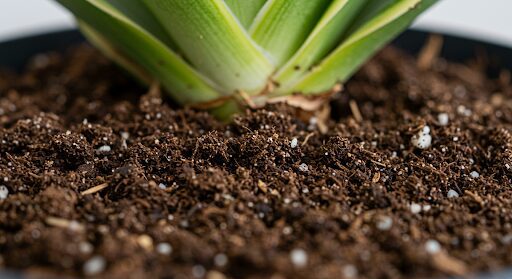
Soil and Fertilization
Choosing the Right Soil and Fertilizer for Mother in Law’s Tongue
Soil quality plays a significant role in keeping your Mother in Law’s Tongue healthy. The key is ensuring the soil is well-draining so that the roots don’t become waterlogged.
Best Soil for Mother in Law’s Tongue:
For the best results, use a cactus or succulent soil mix, as it provides the proper drainage and airflow needed by the plant’s roots. You can also make your own mix by combining potting soil with sand or perlite to increase drainage.
Fertilizing:
Mother-in-law’s tongue (Sansevieria), also known as snake plant, is known for its resilience and minimal care requirements. While it doesn’t require frequent fertilization, occasional feeding can promote healthy growth. Using a balanced, diluted liquid fertilizer once every month during the growing season (spring and summer) is recommended.Avoid fertilizing during the dormant season (fall and winter), as the plant’s growth slows down, and over-fertilization can be harmful.
Our Indoor Plant Food is suitable for a wide range of houseplants, including Mother-in-law’s tongue. This ready-to-use liquid fertilizer is formulated to support healthy roots, stems, and leaves.
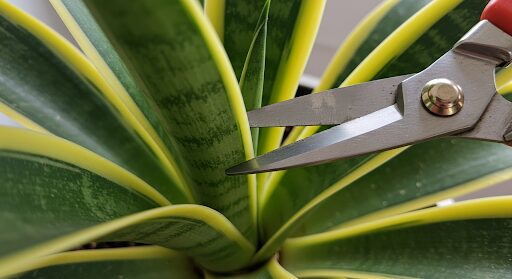
Pruning and Propagation
Pruning and Propagating Your Mother in Law’s Tongue
While Mother in Law’s Tongue is a low-maintenance plant, regular pruning and propagation can help maintain its appearance and health.
Pruning:
Pruning is important for removing any dead or yellowing leaves. Simply use a clean, sharp pair of scissors or pruning shears to cut the leaves at the base, being careful not to damage the healthy growth. If your plant has grown too tall or leggy, you can also trim the leaves to encourage a bushier shape.
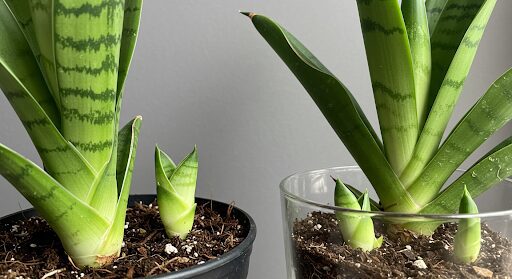
Propagating:
Mother in Law’s Tongue is incredibly easy to propagate. Here’s a simple step-by-step guide to propagation:
- Cut a healthy leaf from the plant (around 4-6 inches long).
- Allow the cutting to dry out for a day or two to prevent rot.
- Plant the cutting in a small pot filled with a well-draining soil mix.
- Water lightly and place the pot in bright, indirect light.
- In a few weeks, roots should begin to form, and new growth will appear.
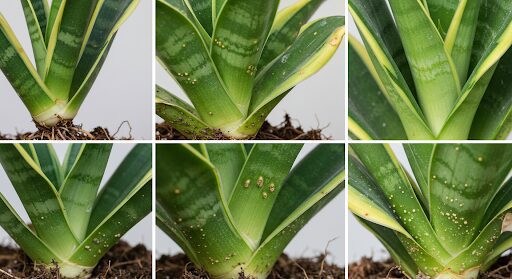
Common Problems and Pests
Troubleshooting Common Issues with Mother in Law’s Tongue
While the Mother in Law’s Tongue is generally easy to care for, it’s still prone to a few common problems. Here are some issues to watch out for and how to solve them.
Yellowing Leaves:
If your plant’s leaves are turning yellow, it could be a sign of overwatering. Make sure the soil has dried out before watering again and check for any signs of root rot.
Pests:
Mother in Law’s Tongue is relatively pest-resistant, but it can occasionally attract pests like mealybugs or spider mites. If you spot any pests, gently wipe the leaves with a damp cloth or use insecticidal soap to treat the infestation.
Root Rot:
Root rot occurs when the plant’s roots sit in waterlogged soil for too long. To prevent root rot, always ensure your pot has drainage holes, and allow the soil to dry out completely between waterings.

Decorating with Mother in Law’s Tongue
Decorating with Mother in Law’s Tongue: Ideas and Inspiration
The Mother in Law’s Tongue makes a bold statement in any room. Its upright, sword-like leaves add a sleek, modern touch to your home décor. Here are some decorating ideas to inspire you:
- Add it to your living room or office for a stylish, air-purifying feature.
- Use it as a floor plant: Mother in Law’s Tongue can grow quite tall, so placing it in a decorative floor pot adds elegance and sophistication.
- Pair it with other succulents: Combine your Mother in Law’s Tongue with other low-maintenance plants in a stylish planter for a modern, minimalist look.
Conclusion: Essential Care for Your Mother in Law’s Tongue
Caring for a Mother in Law’s Tongue is simple and rewarding. By providing the right lighting, temperature, watering routine, and occasional pruning, you can enjoy this attractive and low-maintenance plant for years to come. Whether you’re new to indoor gardening or a seasoned plant owner, the Mother in Law’s Tongue is an ideal choice for adding greenery to your home.

FAQ Section
How often should I water my Mother in Law’s Tongue?
Water your Mother in Law’s Tongue every 2-3 weeks during the growing season and once a month in the winter. Always ensure the soil has dried out before watering.
What kind of fertilizer is best for Mother in Law’s Tongue?
For optimal growth of your Mother-in-Law’s Tongue (Sansevieria), we recommend using the Indoor Plant Food fertilizer. This balanced formula provides essential nutrients to support healthy roots and vibrant foliage. Apply every 4-6 weeks during the growing season (spring and summer) for best results. Reduce feeding in fall and winter when the plant rests. This fertilizer helps keep your plant thriving with minimal effort
Can I grow Mother in Law’s Tongue outdoors?
Mother in Law’s Tongue can be grown outdoors in warm climates, but it should be protected from direct sunlight and cold temperatures.
Why are the leaves of my Mother in Law’s Tongue turning yellow?
Yellowing leaves may indicate overwatering. Ensure the soil is dry before watering again, and check for signs of root rot.
How do I propagate Mother in Law’s Tongue?
Cut a healthy leaf, allow it to dry for a few days, then plant it in well-draining soil. Water lightly and place it in indirect light. Roots should form in a few weeks.

